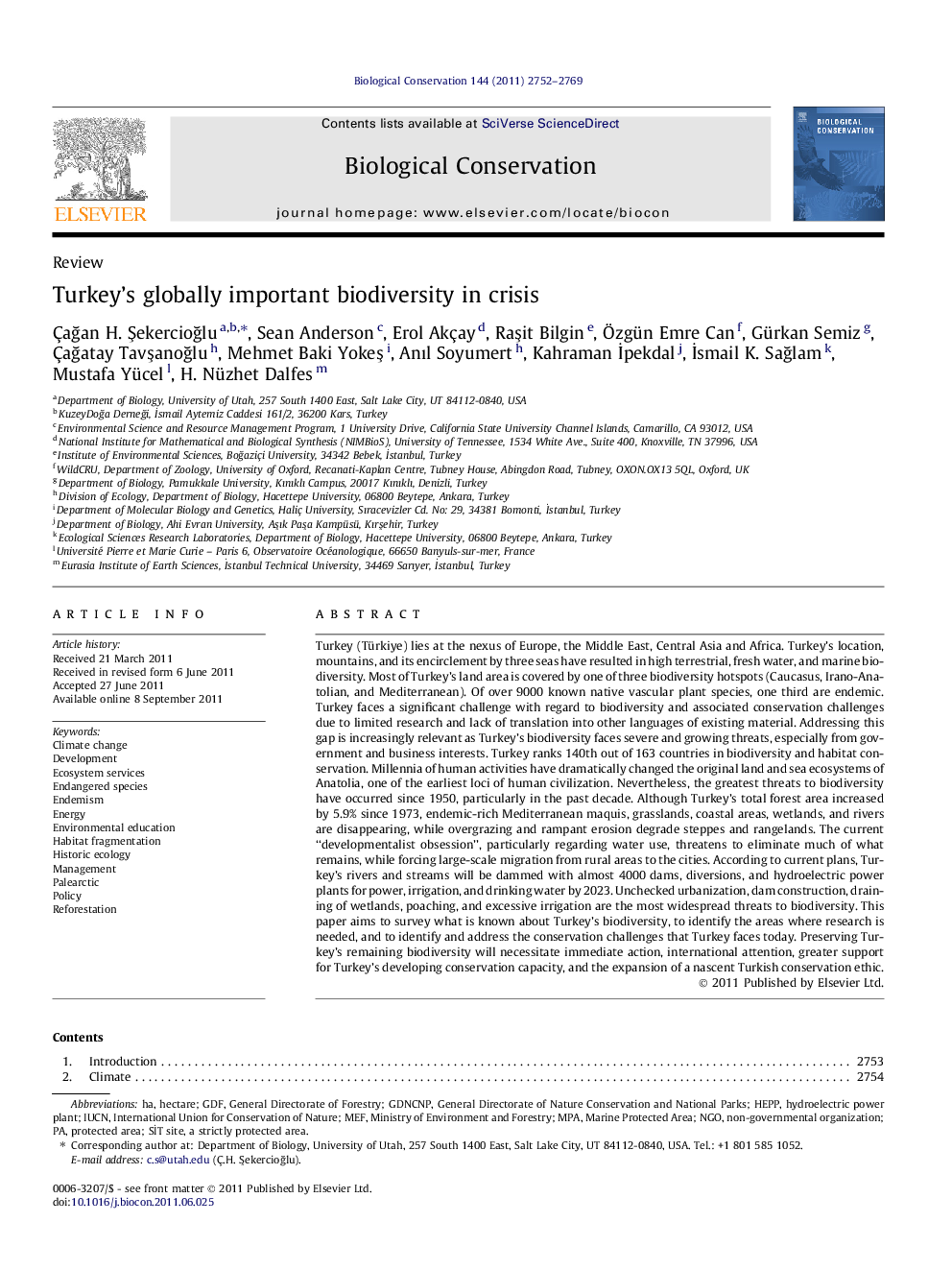| کد مقاله | کد نشریه | سال انتشار | مقاله انگلیسی | نسخه تمام متن |
|---|---|---|---|---|
| 6301193 | 1304537 | 2011 | 18 صفحه PDF | دانلود رایگان |

Turkey (Türkiye) lies at the nexus of Europe, the Middle East, Central Asia and Africa. Turkey's location, mountains, and its encirclement by three seas have resulted in high terrestrial, fresh water, and marine biodiversity. Most of Turkey's land area is covered by one of three biodiversity hotspots (Caucasus, Irano-Anatolian, and Mediterranean). Of over 9000 known native vascular plant species, one third are endemic. Turkey faces a significant challenge with regard to biodiversity and associated conservation challenges due to limited research and lack of translation into other languages of existing material. Addressing this gap is increasingly relevant as Turkey's biodiversity faces severe and growing threats, especially from government and business interests. Turkey ranks 140th out of 163 countries in biodiversity and habitat conservation. Millennia of human activities have dramatically changed the original land and sea ecosystems of Anatolia, one of the earliest loci of human civilization. Nevertheless, the greatest threats to biodiversity have occurred since 1950, particularly in the past decade. Although Turkey's total forest area increased by 5.9% since 1973, endemic-rich Mediterranean maquis, grasslands, coastal areas, wetlands, and rivers are disappearing, while overgrazing and rampant erosion degrade steppes and rangelands. The current “developmentalist obsession”, particularly regarding water use, threatens to eliminate much of what remains, while forcing large-scale migration from rural areas to the cities. According to current plans, Turkey's rivers and streams will be dammed with almost 4000 dams, diversions, and hydroelectric power plants for power, irrigation, and drinking water by 2023. Unchecked urbanization, dam construction, draining of wetlands, poaching, and excessive irrigation are the most widespread threats to biodiversity. This paper aims to survey what is known about Turkey's biodiversity, to identify the areas where research is needed, and to identify and address the conservation challenges that Turkey faces today. Preserving Turkey's remaining biodiversity will necessitate immediate action, international attention, greater support for Turkey's developing conservation capacity, and the expansion of a nascent Turkish conservation ethic.
⺠Exhibiting high topographic and climatic diversity, Turkey is mostly covered by three biodiversity hotspots (Caucasus, Irano-Anatolian, and Mediterranean). ⺠Turkey ranks 140th out of 163 countries in biodiversity and habitat conservation, and threats have peaked in the past decade. ⺠Developmentalist obsession, unchecked urbanization, dam construction, draining of wetlands, poaching, and excessive irrigation are the biggest threats. ⺠Total forest area increased by 5.9% since 1973, but coasts, wetlands, rivers, grasslands, and endemic-rich Mediterranean chapparal are highly threatened. ⺠Conserving Turkey's biodiversity requires immediate action, environmental education, international attention, capacity building, and expanding the Turkish conservation ethic.
Journal: Biological Conservation - Volume 144, Issue 12, December 2011, Pages 2752-2769